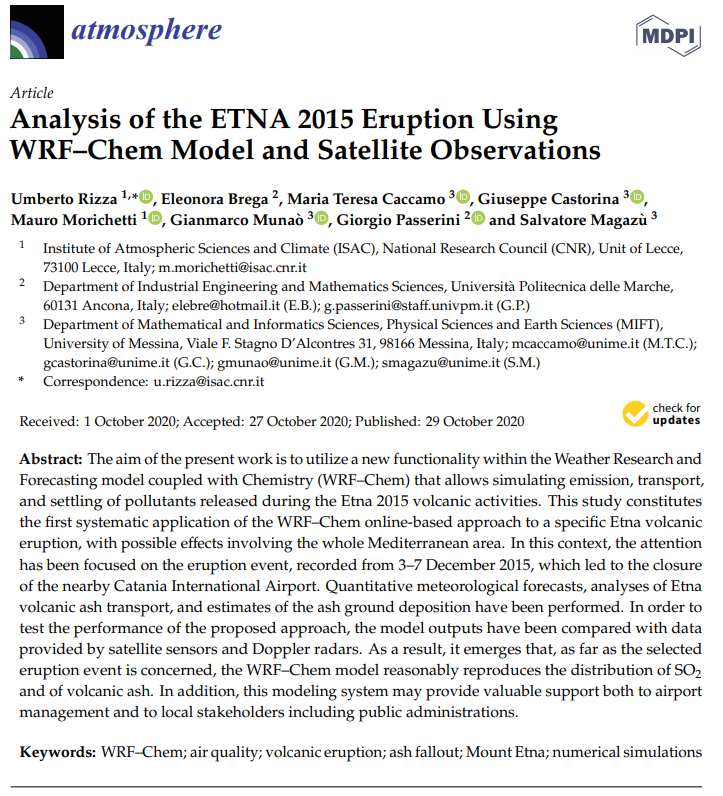In data 29/10/2020, all’interno dello Special Issue Forecasting the Transport of Volcanic Ash in the Atmosphere della rivista Atmosphere è stato pubblicato il seguente articolo:
Analysis of the ETNA 2015 Eruption Using WRF–Chem Model and Satellite ObservationsWRF-Chem optimization for the estimation of Etna volcanic ash fallout
Umberto Rizza1*, Eleonora Brega2, Maria Teresa Caccamo3, Giuseppe Castorina3, Mauro Morichetti1, Gianmarco Munaò3, Giorgio Passerini2 and Salvatore Magazù3
- Institute of Atmospheric Sciences and Climate (ISAC) National Research Council (CNR), Unit of Lecce, Lecce, 73100, Italy
- Department of Industrial Engineering and Mathematics Sciences, Università Politecnica delle Marche, Ancona, 60131, Italy
- Department of Mathematical and Informatics Sciences, Physical Sciences and Earth Sciences (MIFT), University of Messina, Viale F. Stagno D’Alcontres 31, 98166 Messina, Italy
DOI: https://doi.org/10.3390/atmos11111168
Abstract:
The aim of the present work is to utilize a new functionality within the Weather Research and Forecasting model coupled with Chemistry (WRF–Chem) that allows simulating emission, transport, and settling of pollutants released during the Etna 2015 volcanic activities. This study constitutes the first systematic application of the WRF–Chem online-based approach to a specific Etna volcanic eruption, with possible effects involving the whole Mediterranean area. In this context, the attention has been focused on the eruption event, recorded from 3–7 December 2015, which led to the closure of the nearby Catania International Airport. Quantitative meteorological forecasts, analyses of Etna volcanic ash transport, and estimates of the ash ground deposition have been performed. In order to test the performance of the proposed approach, the model outputs have been compared with data provided by satellite sensors and Doppler radars. As a result, it emerges that, as far as the selected eruption event is concerned, the WRF–Chem model reasonably reproduces the distribution of SO2 and of volcanic ash. In addition, this modeling system may provide valuable support both to airport management and to local stakeholders including public administrations.


